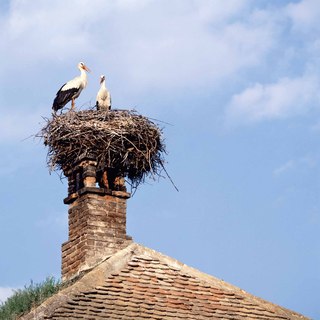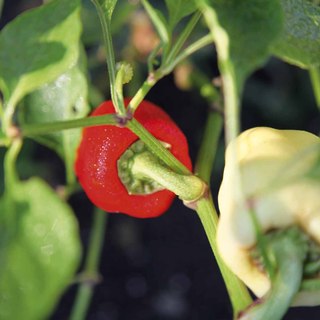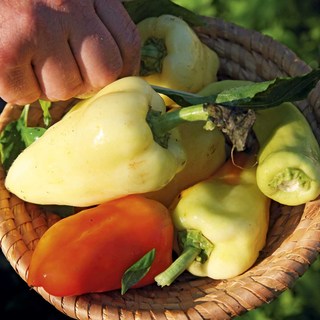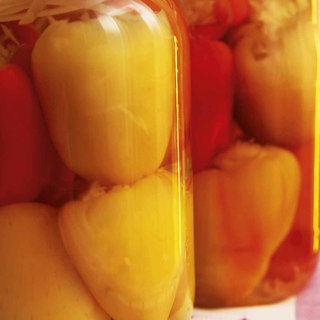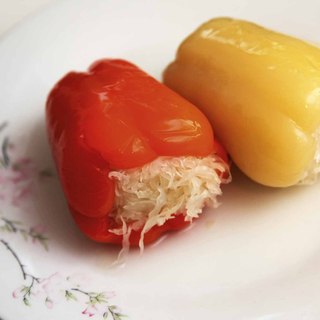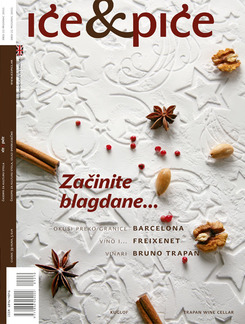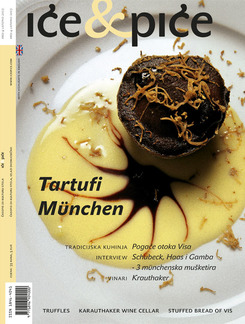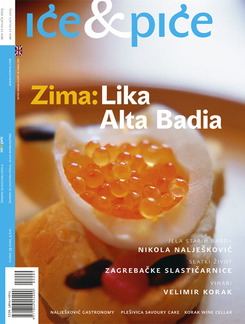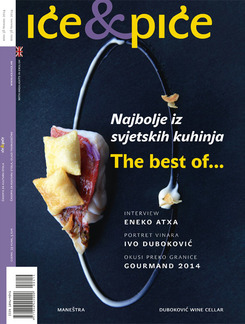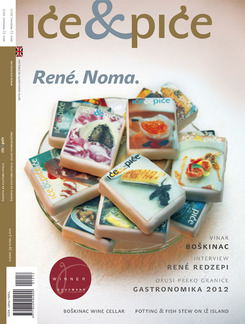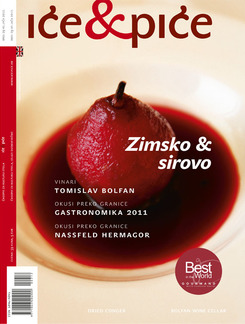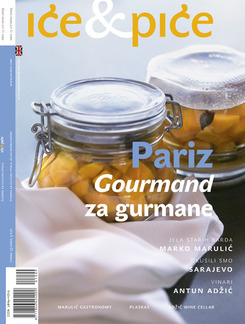With the days so inexorably shorting and the autumn paling, jars of pickled vegetables, mushrooms, pickles of peppers, tomatoes and aubergines, tomato-based sauces can all put away the colours of summer for the parsimonious hues of winter. The thousands of years of putting up reserves of food for winter would write the biggest cook-book in the world which today, when we eat fresh strawberries in winter and pickled gherkins in summer would be a pointless publishing venture. On the shelves of the shops and sometimes larders where only the obstinate and impassioned stand against the trend strut jars of tomatoes, neatly arranged gherkins, colourful mixed salads and beetroot. The most versatile vegetable cooked and roasted and pickled in Croatian cooking must be the bell pepper (paprika in Croatian).
There is so much love for it that we eat it in fact the whole year round (and I am not thinking of those vegetable fashion models that are sold under neon lights). In winter we eat them pickled in one of a dozen ways; in summer, when the season starts, they seethe filled, they’re grilled over the embers, simmered in vegetable and rice casseroles, cooled in salads. But autumn is the time when peppers are at their peak. Then the marketplaces are suddenly taken over by red peppers and the season of what are for me the hardest kitchen tasks starts – roasting ajvar and pickling peppers. At home we impeccably pickled all sorts of stuff – cucumbers, mixed pickled veg or torshi, mushrooms, beets, mixed salads and green tomatoes, but peppers never turned out they way they should have. Instead of being firm and crunchy, even better than fresh, they always turned out somehow, huh. In the third generation, and I am tracking the previous two from messy notebooks, it seems to me I will give up on attempts to break the family curse, and have to admit – we just cannot make ordinary pickled peppers. It’s my good luck that almost all winter stores have moved from larder to freezer, from kitchen to industry. When we can eat ready-made pickled peppers all year round, why bother oneself with pickling and its uncertain outcomes. If someone has a tried and tested recipe, though, let me know.
One cannot even imagine the traditional cuisine without its plethora of paprika filled dishes, though at the beginning of the 20th century it was still added to food on the tip of a knife. Stuffed, pickled or roasted peppers are not to be found in cookery books a hundred or so years old, and the vegetable is not to be found on the list of plants that a well ordered garden, the kind that is the pride and glory of an industrious housewife... who wants and does good for her home... just has to have. For a hundred years ago it was considered only a condiment and not a vegetable. Only the red variety was used, mild or hot, which gave food a nice colour and fragrance. Paprikash had already become common but peppers – pickled, crunchy, wonderfully fresh with sating and heavy winter dishes still did not exist in the first decades of the 20th century. Miroslav Galović who in 1908 prepared the handbook Food and how it is prepared put pepper / paprika on the spice shelf, together with cinnamon, ginger, cloves and black and white pepper.
The history goes back to some 7000 BP, when it was cultivated in the tropical areas of South America; arriving in Europe at the end of the 15th century but, except for seldom in Italy, was not used as a vegetable until the beginning of the 18th century. The name of paprika or pepper is owed to Columbus’ false impression that it was a kind of pepper (quite understandable, considering the price of pepper). It was first used as a decorative plant, just like potato; and it was sometimes considered poisonous up to the 18th century. It owed its European success to becoming a spice for the poor, incomparably cheaper than the so-much desired green pepper. Around 1560 in Hungary and early, peppers were grown in the Pannonian area, and where it was not known as Spanish but as Turkish pepper shows that it came to see with the Ottoman Empire. At the end of the 16th century it spread from Greece to Hungary, which founded its gastronomic fame upon the plant. But another two hundred years was to pass for this pepper of Columbus to conquer the world. The pungency of paprika, at once accepted in Asian cooking, did not entirely suit the European plate. When in the middle of the 20th century Spanish and Hungarian gardeners cultivated many varieties of sweet pepper, a new chapter in cooking was opened.
There really have been plenty of recipes for preparing peppers in the cook-books of the last fifty years. Migrations and cultural interference of neighbours have done the most to foster the success of peppers in Slavonian cooking. The vicinity of the capital of peppers, which took the name from it from the Croatian word for hot and pungent – papreno – ensured its availability, and also the Ottoman cuisine’s fondness for the dolmeh, stuffed vegetable. The heavy Slavonian meaty and greasy food found its ideal balance and complement in ingenious pickles. It is not accidental that the oldest Slavonian recipe in Croatian was actually for pickled cucumbers, noted by Slavonian writer Josip Relković in 1796. If some dish reveals the touch of traditions that resulted in a unique cuisine in a given area, then in the case of Slavonia, this is above all pickled peppers filled with chopped cabbage. A recipe that really did come into being during the time of our grandmothers comes down to us as a happy result of the peaceful coexistence of Hungarian, Turkish and Croatian cooking traditions. But since cooking skills travel along private channels and seldom respect national borders, peacefully subduing curious mouths, the origin of some food that has been conveyed from mouth to mouth and table to table can never be finally discovered.
Although pickled peppers can be found in various versions today in every better stocked shop, in Slavonia the household production of perfect pickled peppers still endures – with or without cabbage. While this is the case, stuffed pickled peppers are still for me a wonderful traditional food, making me feel at home, even if I buy them in a Polish shop in Northern Island.
